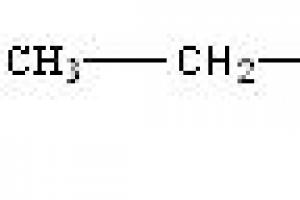In painting and also in construction important role plays thinner for oil paints. Suitable for watercolor or gouache plain water. Some paints do not need to be diluted at all. But oil enamels require additional special compositions. They have different properties and functions.
Why do you need solvents for oil paints?
Artists now have a special water-soluble oil paint, but it is not suitable for construction. Why do you need to dilute ready-made formulations? Oil paint is based on a pigment that is mixed with drying oil. If the enamel is not used for a long time, then the harder particles settle and a layer of oil remains on top.
The jar must be shaken thoroughly before use. Sometimes it is necessary to make the paint more liquid or to blur the thickened one. In this case, solvents are used. But you need to take into account the fact that the compositions of oily enamels are different. Each one uses a certain type of drying oil, which acts as a solvent.
Selection of solvents
Paints are divided into two types, used indoors and for external works. This separation occurs because some formulations have a strong odor due to toxicity. There are several types of drying oil:
- Natural – made from soybean, linseed or hemp oil. This drying oil is marked MA-021. Oily enamels based on it are suitable for painting doors, windows and other internal parts premises, excluding the ceiling, floor. Application to these surfaces disrupts the air exchange in the room and prevents the passage of moisture.
- Composite (or combined) drying oil - made by mixing oil with a solvent. Designated MA-025. The finished mixture can be diluted with gasoline, turpentine, and white spirit. This enamel has a strong odor, and its fumes are harmful to health. Not suitable for indoor use.
- Artificial drying oil replaces natural drying oil and is designated GF-023.
- Pentaphthalic consists of real oils with the addition of drier, glycerin and phthalic anhydride. This drying oil is designated PF-024.
In order to properly dilute oily enamels, you need to familiarize yourself with their composition, and then select the appropriate solution that matches the type of drying oil. On packages of paints it is always written which solvents are suitable for this product.
Varieties
Thinners for oily enamels are chemicals that are added to formulations to achieve a more liquid consistency. The three main solvents are:
- White Spirit;
- solvent 647;
- turpentine.
White spirit is universal thinner. It is used more often than other means. Moreover, now this diluent is made odorless. The cost of white spirit is low, so it is accessible even to the common man. When used, the consumption of oil paint is greatly reduced, but this does not affect the quality of the coating.
Solvent 647 is a colorless liquid with a pungent odor. This product is flammable. Indoors it is used as a dilution for alkyd and pentaphthalic paints. Thinner 647 can be used on varnishes and putties. At the same time, the product can be used as a primer.
Turpentine has long been used as a dilution. This is a product that is obtained after processing resin, wood, and other materials. Turpentine is a specific essential oil with a very complex chemical composition. There are three main types: woody, stump and turpentine.
Two more agents are used as diluents. Kerosene works well to restore old dried paints. But in this case, more turpentine must be added. Drying takes a long time - ten days. After diluting the paint with gasoline, the resulting composition will give a matte finish.
Proper Use
Before diluting oil paints, you must read the instructions. All solvents are volatile, so they should not be kept near fire, switches, or switches. Due to the explosive nature of thinners, do not smoke during use or during mixing. At low temperatures, enamel dissolving agents may freeze.
Some have a rather unpleasant pungent odor. Therefore, oil enamel should be diluted only in ventilated areas or in the fresh air (if it is not cold). Otherwise, you can easily get poisoned by toxic fumes.
All thinners are strong chemicals. If they come into contact with open skin or mucous membranes, these areas should be immediately rinsed thoroughly with clean water. cold water. Even clothing can be damaged by some solvents.
When diluting oil enamels, you need to be very careful with the proportions. Incorrectly selected parts can simply ruin the mixture. The correct proportions are always indicated relative to each solvent. They are sold already with instructions for use.
Solvents are used not only for thinning thickened paints. Turpentine, white spirit and others are also used for fresh compositions. Solvents not only thin the mixtures, but also degrease them at the same time. A good primer is prepared using thinning agents.
Oil enamels They are very popular because they are very beautiful, affordable and protect the surface well from moisture, rotting, and corrosion. Even if the composition thickens greatly, you can always use thinners.
To apply oil paint to a surface, sometimes it is necessary to obtain a more liquid consistency, so it becomes necessary to dilute the composition. This procedure will also be required in cases where the solution was left for some time in an unsealed container, which led to its hardening. To dilute the mixture, various substances are used, which are selected based on the purpose of the paint.
|
When choosing a solvent, pay attention to the purpose for which the paint is intended. The fact is that this type of material includes two large groups, divided by area of application:
1. Solutions used for painting surfaces of residential or commercial premises. Suitable for these purposes traditional compositions, which are presented in abundance on the shelves construction stores. Although in Lately The demand for these products has decreased; in certain situations, an oil solution may be the optimal solution.
This mixture must be diluted in the following cases:
- The material is too thick.
- A base layer needs to be laid.
- Painting is done on wood. A composition that is not too thick fits well on such a base, otherwise it will not be possible to achieve strong adhesion.
 To properly apply oil paint with a spray gun, it must first be diluted.
To properly apply oil paint with a spray gun, it must first be diluted. In addition, it often happens that after use some of the paint remains, which manages to dry even in a short period of time. This is what dilution is required for.
2. Artistic oil paints. They are great for amateur or professional drawing, as well as painting interior compositions. It is necessary to dilute such compositions with great care, so special diluents are selected for them.

Thinner for painting surfaces
Can be used as a solvent for exterior and interior painting available materials. Their selection is quite large.
This composition has steady popularity when diluting coloring products. The following types are used for working with oil solutions:
- Woody. It is made from the bark and branches of trees containing an abundance of resin. The initial solution is dark, but after processing it becomes transparent.
- Turpentine. It is obtained by distilling the resins of living coniferous trees and is essential oils. It has many positive properties, so its scope of use is much wider than its use as a solvent.
Attention! The mixture has a specific odor, so it is recommended to carry out work in a ventilated area.

Turpentine can be successfully replaced with white spirit. The demand and popularity of these products is explained by their wide distribution and availability. In addition, there are varieties on sale that do not have a strong unpleasant odor.
The work process when using such a composition is very convenient. The mixture does not evaporate as quickly as other solvents, which allows you to paint without haste. Also, white spirit when added does not change the color of the composition.
 Regular white spirit has little ability to liquefy, so it is better to purchase purified
Regular white spirit has little ability to liquefy, so it is better to purchase purified Solvent
This thinner for oil paints has the number 647. Product designation may vary and depends on the components included. It is not recommended to use solvent number 646 due to the presence of acetone in it.
It is not always easy to dilute oil paint with this substance: excess leads to a deterioration in the properties of the product.

Gasoline and kerosene
These options are recommended for use in the absence of other mixtures and only for outdoor use. A significant drawback of the solutions is the specific smell, which can cause dizziness and poisoning. This is due to rapid evaporation. But it is kerosene that is the best solution, when it is necessary to dilute the old composition, which has had time to thicken greatly.

Drying oil
This is a universal solution; besides, drying oil is included in oil paints. But it must be taken into account that the diluent must correspond to the type of substance that is included in the coloring material.
For getting necessary information You need to pay attention to the labeling of paint mixtures. The following designations are distinguished:
- PV-024. Such products are made on the basis of pentaphthalic drying oils.
- MA-021. The composition includes natural drying oil, which contains more than 95% vegetable oils.
- GF-023. Produced with the addition of glyphthalic drying oil. It is an alternative to natural.
Correct identification of components helps to obtain the desired result.
 Drying oil “Oxol” consists of 55% natural oils, 5% from drier, the rest is white spirit; in its properties, “Oxol” is practically no different from natural drying oil, but its cost is much lower
Drying oil “Oxol” consists of 55% natural oils, 5% from drier, the rest is white spirit; in its properties, “Oxol” is practically no different from natural drying oil, but its cost is much lower Dilution procedure
No less important is the process of diluting the paint yourself, because its accurate implementation is the key to the absence of further problems.
Activities are carried out in the following order:
- The container of paint is opened, the thickness is assessed and thorough mixing is performed. To do this, use a handy tool or a prepared clean stick.
- The required proportion is determined. For each solvent, the indicator may be different. The exact amount of the substance depends on the thickness of the paint, but should not exceed 5% of the total mass. Although, if necessary, obtain a mixture for the base layer or primer of walls, the volume of white spirit and drying oil can reach up to 10%. To dilute the mixture in the best possible way, the thinner is added directly to the jar. It should be poured in gradually in small portions. This will allow you to restore the composition and mix it well.
- Next, the paint is poured into containers for use. During the painting process, the material may thicken, so you need to periodically mix the solvent.
It is more difficult to thin paint that has been left open for a while. Work order:
- The film that has formed on the surface due to exposure to oxygen is carefully removed. You cannot leave it or mix it, otherwise it will be impossible to completely get rid of hard lumps.
- A small amount of kerosene mixed with white spirit is poured into the container, everything is mixed well. If required, more thinner is added.
- Then you can paint with this mixture or wait until the kerosene evaporates and use only one component for dilution.
Important! The work is carried out in compliance with increased precautions, since oil paint and all substances used for dilution are flammable and toxic.
Dilution of artistic paints
Drawing materials can also be of different thicknesses, which requires bringing them to the desired consistency. In addition, the mixture is applied to different surfaces(wooden, fabric). Therefore, oil art paints require a different approach and a list of diluting agents.
 Thinners for art paints: linseed oil, pinene, multi-component composition “tee”
Thinners for art paints: linseed oil, pinene, multi-component composition “tee” Such compositions can be diluted with the following substances:
- Oil. Purified hemp, sunflower or flax oil is suitable for the process.
- Pinen. Its other name is “Thinner No. 4”.
- Multicomponent mixtures. This can be a double and a tee: the first contains varnish and oil, and the second has pinene added to them.
It is recommended to choose the material solely from your own preferences, this will allow you to achieve the desired result. That is why such paints are diluted in proportions that are determined individually after several samples. But it is worth remembering that excess solvent can destroy the structure of the coloring material.
How to thin oil paint for application with different tools
Usage different instruments for painting walls, ceilings or other substrates, it involves diluting the composition to the required level viscosity At home, this parameter is determined using simple device- a viscometer, which can be purchased at the store.
The device is a funnel with a nozzle, which can be different sizes. Based on the period of time during which the poured composition flows through the hole, the viscosity level is determined in seconds.

The process looks like this:
- After adding the solvent to the paint container and mixing, the viscometer is immersed in it.
- A stopwatch is prepared in advance. You can use any other device.
- The device is removed from the composition, and the timer is turned on at the same time.
- After the mixture completely empties the glass (funnel) of the device, the stopwatch turns off. The value is fixed.
To paint the surface with brushes and a roller, the viscosity should be at the level of 10–15 seconds, and for a spray gun – 25–30 seconds, depending on the model.
Construction oil paint can be thickly rubbed or completely ready for use. With thickly rubbed paints, a solvent for oil paints must be used. Enamels of this type are mixed in a certain proportion with a dissolving liquid. This is necessary if the paint has dried or will be used as a primer. A suitable thinner is selected based on the characteristics of the surface to be painted and its absorbent properties.
Main groups of solvents
Today there are five groups of substances that are used in finishing works as solvents.
These are petroleum distillates, or by-products of petroleum refining, various alcohols, ketones, ethers, and glycol ethers.
Petroleum distillates
Everyone knows what turpentine is, and it could be included in the sixth group of liquids. However, its performance characteristics are very close to those of petroleum distillates, and it is best to include it in this group. Each specific solvent for oil paints from the group has its own characteristics. The most common are petroleum distillates, which are also called hydrocarbons. The molecule of such a substance is a carbon and hydrogen atom. Liquids that are included in this group are produced by refining oil, or rather by dividing it into fractions under the influence of temperatures. Turpentine is a distillation product, but it is not obtained from oil, but from resins coniferous species wood
Petroleum solvents are used to work with waxes, oils, paints, enamels on oil based. Any solvent that is hydrocarbon based has characteristics and properties that are similar to those of oils or waxes. Sometimes these liquids can be used in the production of lubricants or compositions for cleaning and caring for furniture. Distillates, which contain significantly less oil, such as toluene or xylene, can be used to remove oil stains and are most often used to degrease surfaces.

Any products based on petroleum distillates can be mixed different ways and in any proportions. Alcohols and glycol ethers are not used with oil paints. They have different characteristics and properties.
How to dilute oil paint
If necessary, you can always buy a solvent for oil paints at any hardware store or hypermarket. There are several fluids that are suitable for working with oil-based dyes.
Solvent "647"
This is an affordable and popular solution. The substance comes in the form of a liquid with a rather pungent odor. Care should be taken during operation - the composition catches fire very easily. As for its properties, the paint with it has a uniform consistency.
White Spirit
This is the most widespread and popular liquid. If you look at chemistry textbooks, this solvent is a special type of gasoline in composition, intended specifically for paint and varnish production. Specific gravity is 0.77 kg, and this liquid will boil at 140-150 degrees.

It is made using White Spirit - this is a colorless liquid composition that has properties that allow it to dissolve binders contained in oil paints. Another characteristic is that the liquid has a low evaporation rate, which is very positive for artists.
Turpentine
This is no less popular solvent for oil paints than white spirit. The composition is widely used for mixing and diluting not only oil dyes, but also alkyd styrene dyes. Turpentine is also used in the production of varnishes based on copal, rosin or dammara. Purified or unrefined turpentine is available for sale.
Before chemists created white spirit, turpentine occupied pride of place as the main liquid for dissolving varnishes and paints. This is an essential oil with a complex chemical composition. It is obtained by processing turpentine, resin and parts of coniferous wood saturated with resins. Today, modern industry produces three types of turpentines - wood, stump and turpentine products.
Wood liquid is obtained by processing tree resin and coniferous tree branches using special technologies. When fresh, it is a liquid with a yellowish or brown tint, which may disappear during processing.

Stump turpentines are produced using special technologies from the stump parts of coniferous trees. Turpentine oils are pure essential oils that are obtained by distilling resin. It is extracted only from a growing tree. This way, turpentine will not lose its unique properties and valuable elements during the production process.
Kerosene
This liquid is perfect for use as a solvent for oil-based dyes. It is often used to restore old hardened oil paint. For greater efficiency You can add a drier to kerosene - for example, any turpentine. But this can increase the drying time of oil paint.
Petrol
This composition is familiar to everyone. It is a clear, colorless liquid with a characteristic odor. In everyday life, pure gasolines are often used as solvents for oil dyes, pentaphthalic compounds, putties and varnishes. Gasoline can also be used as a solvent for oil-phthalic paints. With it, the oil liquid will acquire a matte tint. The component is popular in construction - it is used to dilute thickly rubbed paint.
"Tee"
This mixture is popular with artists, but can also be used in painting projects. This liquid contains purified linseed oil, turpentine, and

Using this “tee” you can easily give the oil dye the optimal consistency in a short time. Artists love this solution because it not only helps thin the paint, but can also be used to clean tools. This composition significantly improves permeability into the painted surface, and in painting it allows you to make the picture more accurate.
How to replace solvent for oil paints
Oil paints can be used in different ways, but in any case, solvents are added to the dyes. Now there are a lot of different solvent mixtures for enamels and paints, and each has its own disadvantages and advantages. It happens that you can use special remedy there is no possibility. The most common replacement option is regular gasoline. In addition to this, you can use turpentine or white spirit with great success.
Odorless solvents
The paint and varnish industry is now more developed than ever - a huge number of types and subtypes of thinners and solvents can be found on sale. Despite all the practicality of white spirits and turpentines, they are quite toxic and have a characteristic odor. What to do if a person prefers a solvent for oil-based solvents? There are several options. Artists appreciate all the benefits linseed oil- This good solvent for oil dyes. One of its properties is the almost complete absence of odor. However, there is also a minus - the paint takes a long time to dry.

It is recommended to use “Tee” - an industrial mixture that also has virtually no odor. Well, the best odorless oil paint solvent is a composition from the Tikkurila brand. It is offered in transparent plastic bottles with an inscription yellow color. This composition dries quickly and will last for a long time. The Diluent composition is also odorless, but in itself it is quite harmful.
Oil painting is one of the most popular types of fine art. This is due to the brightness and durability of the work. In addition, working with this material is extremely easy and pleasant. In this regard, it is important to know how to dilute oil paints.
Do I need to thin oil paints?
It is quite possible to use oil paints for painting without thinners. If the texture is soft enough and you like relief works, then feel free to paint with them in their pure form. However, the paint may have too thick a consistency and thicken over time. In this case, you will certainly be faced with the question of how to dilute oil paints. The main thing to understand here is that any solvent makes the work less bright. And if you use natural oils, keep in mind that the drying time of the finished painting will increase significantly. In any case, you need to keep such products in your arsenal so that you can wash your brushes and palette.
Ready thinner
In art stores you can find oil paint thinners that differ in numbers. They contain turpentine, pinene and white spirit. The number indicates the ratio of the specified substances. Thinners are used not only for painting, but also for washing brushes and cleaning the palette.

Oil as a thinner
The first thing that comes to mind when asked about how to dilute oil paints is, of course, vegetable oils. Most often they use flaxseed or hemp. But it is best to carefully read the composition of the paint and choose a similar oil in an art store. This additive will make the material softer and more pliable. In addition, the work will have a characteristic shine. After drying, the painting will be covered with an invisible elastic film that will protect it from the destructive effects external factors. If we talk about the disadvantages of such a diluent, it is worth noting the unpleasant suffocating odor.

Turpentine and white spirit
Purified turpentine is a good option for large-scale paintings. Oil paints for painting become quite viscous and do not dry for a long time, and therefore you will always have the opportunity to make adjustments to the work. However, never use household turpentine, only from an art store. This substance can make the paint appear yellow.
As for mineral white spirit, it dries much faster than the previous substance. In addition, it is less finicky in storage and safer in terms of chemical composition. And the price of such a thinner is lower. However, if the substance is of poor quality, finished work After drying, a white coating may appear.
Artistic varnish
If you don’t know how to dilute oil paints, then try painting varnishes. But in no case should they be confused with top coats, which are applied about a year after painting. The varnish must contain tree resin and solvent.
Oil paints for painting, diluted in this way, become more pliable and at the same time denser, which ensures good overlap. In addition, the finished painting becomes bright and shiny, which is quite difficult to achieve using only oil or thinner. After drying, the paint becomes more durable and resistant to external influences.
To make the structure of oil paint softer, a so-called double is often used. It consists of one part varnish and two parts linseed or hemp oil.

Tee recipe
Experienced artists prefer to prepare their own thinner for oil paints, taking into account their needs. The most common tee recipe includes the following components:
- pictorial varnish (it is better to choose dammar or mastic);
- hemp, linseed or poppy oil (the latter is considered one of the most transparent and pure);
- turpentine or solvent for artistic oil paints (white spirit is most often used).
All components are mixed in a clean glass container in equal proportions. The container must be tightly closed, otherwise the solvent will begin to evaporate and lose its properties.
Helpful information
Beginners and experienced artists alike will certainly appreciate the following tips.
Never use solvents from hardware stores, because they not only have an unpleasant odor, but also give the paint a yellow tint after drying.
Some thinners make the paint color fade, but as they evaporate, the color may become brighter again.
Before using a particular solvent when working on a painting, experiment on a test piece of canvas.
You should not use too much thinner, because oil paint can become loose and will not stick to the surface as well.
For quick drying, use turpentine or artist's varnish, and if you have to long work, then it is better to give preference to vegetable oil.
When working with solvents (especially chemical ones), wear gloves and gauze bandages, and do not forget to ventilate the room.
Always dilute a small amount of paint, because it cannot be stored in this form.
If you want to give your painting a pleasant aroma, then use cedar or fir varnish as a solvent.

Can the thinner be reused?
Quite often, artists dip brushes stained with paint into a container of solvent. As a result, it becomes cloudy and, at first glance, absolutely unusable. Dirty diluent can be reused if filtered. First, let the liquid stand until sediment settles out, then pass it through a paper filter. The procedure must be repeated until the precipitate stops falling. Pour the filtered diluent into a clean glass container and screw the lid on tightly.
The right thinner for oil paints will make your work more vibrant and will also speed up the drying process.
Related materials:
Thin the oil paint
 Probably everyone can remember a similar incident: during the renovation period, more than once, due to their own carelessness, they forgot to close a can of paint, which, to their great disappointment, caused the material to harden and was no longer suitable for use. Below are examples of possible paint solvents that will help you save thickened paint, or simply dilute new paint.
Probably everyone can remember a similar incident: during the renovation period, more than once, due to their own carelessness, they forgot to close a can of paint, which, to their great disappointment, caused the material to harden and was no longer suitable for use. Below are examples of possible paint solvents that will help you save thickened paint, or simply dilute new paint.
Oil paints, by themselves, can be either thickly rubbed or immediately have the consistency necessary for their application. Paints, conventionally called “thick”, are used extremely rarely in this form; most often they are diluted with a solvent. Also, already dried paints or those that are planned to be used as a primer are diluted with this specific liquid.
The type of paint solvent is determined according to the properties of the material on which the paint will be applied.
Oil paint can be easily diluted with many chemicals, which are extremely easy to purchase in hardware stores. Examples include the following solvents: turpentine (purified or not), gasoline, solvent 647 kerosene (only with the addition of a drier), white alcohol. However, white alcohol, thinner 647 and turpentine are by far the most widely used types of solvents.
White spirit for oil paints
 The scope of the same white spirit is extremely wide. It is serious competition for turpentine, whose sales volumes fell after white alcohol appeared on the markets.
The scope of the same white spirit is extremely wide. It is serious competition for turpentine, whose sales volumes fell after white alcohol appeared on the markets.
White spirit for oil paints is used in the following cases:
- To obtain an organodispersion when diluting paint and varnish coatings.
- For the purpose of diluting varnishes, primers, drying oils, enamels, car preservatives, etc.
- Used for washing brushes after finishing work.
- In order to degrease the surface if this kind of problem suddenly arises.
- Can be used as a solvent for rubber or alkyds.
This solvent is extremely popular due to its availability, because its price is quite reasonable, even taking into account the wide range of its applications.
When using white alcohol, the cost of paint or other type of paint coating is significantly reduced, but the quality of the paint remains unchanged.
If desired, it is even possible to find a type of white alcohol that does not have its characteristic pungent odor.
Rules for using white spirit for oil paints:
- We should not forget about safety precautions, so you should avoid finding solvents near any open flame sources or switches. It is also worth paying attention in advance to the fact that solvents of some compositions can spontaneously ignite under the influence of temperatures.
- You also need to pay attention to the rather pungent odor of the substance. Therefore, paint should be diluted only in well-ventilated areas or even in the open air.
- Due to the chemical composition of solvents, they should not come into contact with the skin or mucous membranes. Otherwise, you must immediately rinse the area where the substance comes into contact with water. Clothes can also be damaged by exposure to strong chemicals.
Turpentine for oil paints
 Turpentine on this moment is a popular paint thinner. In addition, it is used in the production of rosin, as well as dammar. It can also be found in copal-based varnishes. The composition of turpentine is complex, and in itself it is like an essential oil.
Turpentine on this moment is a popular paint thinner. In addition, it is used in the production of rosin, as well as dammar. It can also be found in copal-based varnishes. The composition of turpentine is complex, and in itself it is like an essential oil.
Types of turpentine for oil paints:
- Stump turpentine. It is made mainly from the bark of coniferous trees, as well as stumps.
- Wood turpentine. In production, tree branches and bark, which contains resin, are used. In its original form, such turpentine is a brownish liquid, which disappears immediately after repeated processing.
- Turpentine turpentine. This type of solvent can only be compared with real essential oil, since it is obtained by distilling resin and resinous materials of the most different types coniferous trees. The valuable properties of this oil are not lost even after secondary processing, which is its undoubted advantage.
Solvent 647 for oil paints
 Solvent 647 - fairly strong, colorless Chemical substance, which tends to ignite easily and also emits a harsh bad smell, which is quite typical for this type of solvent. Often this liquid is used to dilute alkyd enamels and pentaflathein enamels. They are often used to dilute varnishes or putty. The surfaces to be painted are first degreased with a solvent. Various industrial tools and parts are also washed with this liquid, and in addition, solvent 647 is used to clean contaminated fabric.
Solvent 647 - fairly strong, colorless Chemical substance, which tends to ignite easily and also emits a harsh bad smell, which is quite typical for this type of solvent. Often this liquid is used to dilute alkyd enamels and pentaflathein enamels. They are often used to dilute varnishes or putty. The surfaces to be painted are first degreased with a solvent. Various industrial tools and parts are also washed with this liquid, and in addition, solvent 647 is used to clean contaminated fabric.
When diluting paint, you should be extremely careful in its ratio of solvent, since if the amount of solvent is incorrect, the paint can easily be damaged. In diluted form, the paint is used for better penetration into the surface material. A mixture of paint and solvent is also used as a primer.
Mix it well for 10-20 minutes until smooth.
Table. Physico-chemical parameters of solvent 647.
Oil paint on drying oil
Today, drying oil is considered a universal solvent. It is also part of the paint; thanks to it, when applying paint to the surface, a thin film is formed.
The type of drying oil that should be used depends directly on what type is contained in the paint itself. In addition, all oil paints are classified by their other components; they may contain various pigmenting substances and fillers. If the paint contains only one component, then the name of the paint is given precisely by the name of this very component.
The name may also contain the number 2, which means that paint material applicable for all surfaces if the paint is diluted with the same drying oil that is included in its composition.
There is also a special classification for drying oil types of paint:
Indicated on the packaging. This mark indicates that the paint contains harmful toxic substances that can have an adverse effect on health, as well as emit a characteristic odor for a long time after the coating has dried.
MA-0.21. Paints based on natural drying oil. Percentage content: 96% natural oils (soybean oil, sunflower oil, flax oil) and 4% driers. Mainly used for painting walls, windows, doors both outside and inside.
GF-0.23. Halyphthalic drying oil is a natural substitute.
PF-0.24. This is how pentaphthalic drying oil is labeled. It contains drying agent or glycerin. 50% consists of natural materials.
 In accordance with the standards, the packaging must indicate which solvents should be used with this type of paint, as well as its consumption per 1 square meter when applied in 1-2 layers.
In accordance with the standards, the packaging must indicate which solvents should be used with this type of paint, as well as its consumption per 1 square meter when applied in 1-2 layers.
Oil paints are the most durable and long-lasting coating among other paints and varnishes.
They are great for applying to plaster, metal, concrete and wood. This coating also protects the surface from harmful phenomena such as corrosion, rotting, and protects from excess moisture. In addition, this type of paint and varnish products is also used as a primer and has decorative value. They are brighter, and, of course, can be used not only for painting walls outside the house, but also inside it.
They are indispensable for creative individuals, because this is how masterpieces of fine art are often created. So another advantage in favor of oil paints is their prevalence and applicability in completely different areas of life.
Before you decide what would be the best way to dilute the paint, you need to decide for yourself what exactly you should buy. Perhaps a solvent, or perhaps a thinner. Solvents are best used in cases where the paint has simply hardened and dried. After adding it, you need to wait some time, from a couple of minutes to a couple of hours, so that the paint acquires the consistency you need. Then you can work with the material without any problems. And in the case when the paint has thickened, it is better to use a thinner. With its help, you will also give the paint the desired consistency, since substances of this kind reduce the viscosity of the paint and varnish composition.
Sunflower oil in painting
Sunflower oil is extracted from sunflower seeds. Sunflower oil was first pointed out as a material suitable for painting by Prof. F. Petrushevsky.
Raw sunflower oil, cold-pressed, has a light yellow color that fades more or less easily when exposed to light and heat. Chemical composition it has not yet been studied enough. Farion classifies sunflower oil as a semi-drying oil. This oil is of great interest to Russian painters, since it is mined mainly in the USSR, moreover in large quantities, and is inexpensive. Recently, however, it has become interested in the West, where tests of its suitability in painting are also being carried out.
Sunflower oil contains 46% linoleic acids, 39% oleic acid and 9% solid fatty acids. These data on the composition of the oil are apparently close to the truth, as they are confirmed by the slow drying of sunflower oil. But while there is no firmly established data, further research on the composition of sunflower oil is, of course, necessary. Mixing paints with sunflower oil gave certainly satisfactory results.
From personal experiences I know that a layer of sunflower oil does not wrinkle when drying, even with its considerable thickness; The oil dries in a thin layer in the form of cobalt drying oil in approximately 12 hours. When resins and essential oils are introduced into it, it gives a normal layer of painting; In addition, it can serve as a binder for paints in combination with linseed oil, thereby moderating the negative aspects of linseed oil.
The harsh verdict pronounced by Tauber on poppy oil should also apply to sunflower oil, if we take into account the composition of the latter.
Choosing a thinner for oil paint
One should not, however, lose sight of the fact that in the 17th century poppy oil was apparently successfully used in painting by the Dutch and that from the second half of the 19th century a haphazard method of painting reigned; under such conditions, poppy oil gave, of course, worse results than it could have given. With changed views on the composition of binders oil painting, when resins and essential oils began to be introduced into them, and mixtures of various oils also began to be used, the question of using one or another of the above-described oils as paint binders remains open to this day, since we have had long experience with such combined binders in painting. We don't have it yet.
Paints grated on raw condensed sunflower oil alone dry very slowly, especially zinc white, which makes multi-layer painting on it difficult and does not guarantee durability. For completeness, various types fatty drying oils it is necessary to say a few more words about the following oils.
Due to its properties, hemp oil is suitable only for painting, but not for painting.
Pine and spruce seed oils (especially the former) are excellent substitutes for flaxseed oil. They turn yellow less than the latter. Sunlight whiten easily and completely. With paints they give a good paste, similar to the paste obtained with poppy seed oil. Unfortunately, these oils are difficult to obtain, which is why their price is high, especially oils from spruce seed.
Chinese and Japanese oils- wood (tung) and perilla - have good drying abilities, but have not yet been used in painting and have not been studied in this direction.
Oil painting is one of the most popular types of fine art. This is due to the brightness and durability of the work. In addition, working with this material is extremely easy and pleasant. In this regard, it is important to know how to dilute oil paints.
Do I need to thin oil paints?

Tee recipe
Experienced artists prefer to prepare their own meals based on their needs. The most common tee recipe includes the following components:
- pictorial varnish (it is better to choose dammar or mastic);
- hemp, linseed or poppy oil (the latter is considered one of the most transparent and pure);
- turpentine or solvent for artistic oil paints (white spirit is most often used).
All components are mixed in a clean glass container in equal proportions. The container must be tightly closed, otherwise the solvent will begin to evaporate and lose its properties.
Helpful information
Beginners and experienced artists alike will certainly appreciate the following tips.
Never use solvents from hardware stores, because they not only have an unpleasant odor, but also give the paint a yellow tint after drying.
Some thinners make the paint color fade, but as they evaporate, the color may become brighter again.
Before using a particular solvent when working on a painting, experiment on a test piece of canvas.
You should not use too much thinner, because oil paint can become loose and will not stick to the surface as well.
For quick drying, use turpentine or artistic varnish, and if you have to work for a long time, it is better to give preference to vegetable oil.
When working with solvents (especially chemical ones), wear gloves and gauze bandages, and do not forget to ventilate the room.
Always dilute a small amount of paint, because it cannot be stored in this form.
If you want to give your painting a pleasant aroma, then use cedar or fir varnish as a solvent.

Can the thinner be reused?
Quite often, artists dip brushes stained with paint into a container of solvent. As a result, it becomes cloudy and, at first glance, absolutely unusable. Dirty diluent can be reused if filtered. First, let the liquid stand until sediment settles out, then pass it through a paper filter. The procedure must be repeated until the precipitate stops falling. Pour the filtered diluent into a clean glass container and screw the lid on tightly.
The right thinner for oil paints will make your work more vibrant and will also speed up the drying process.








